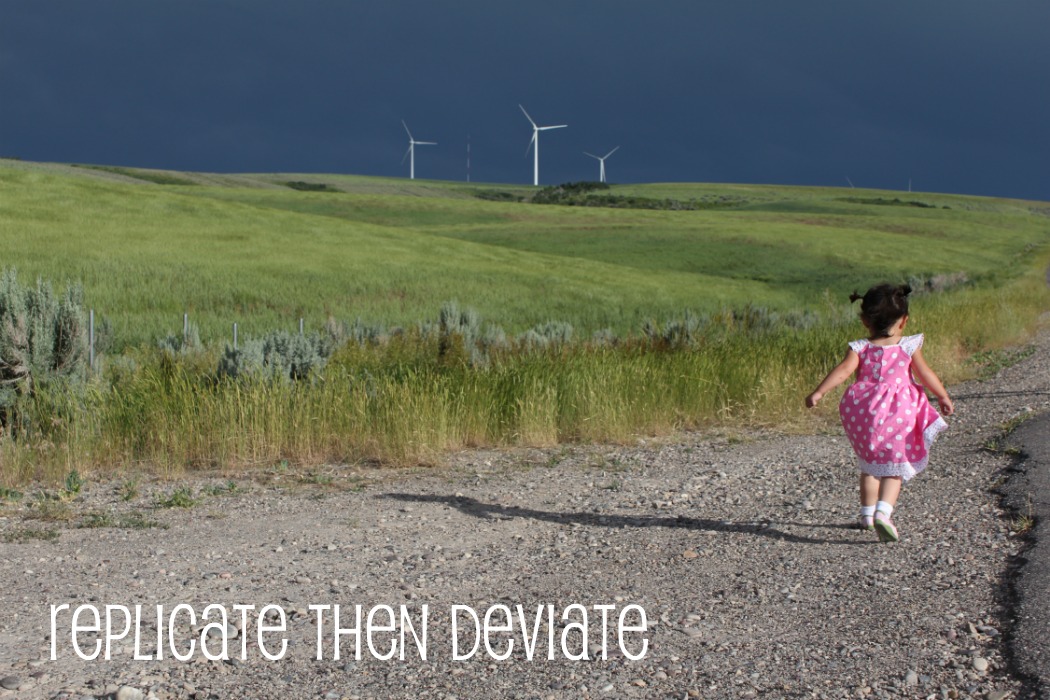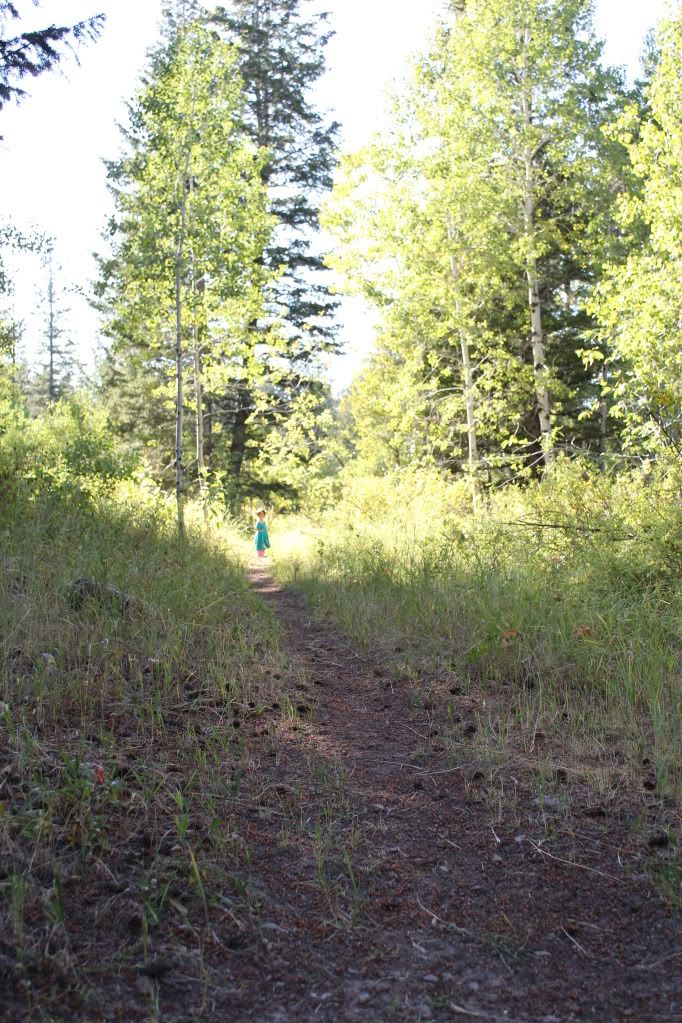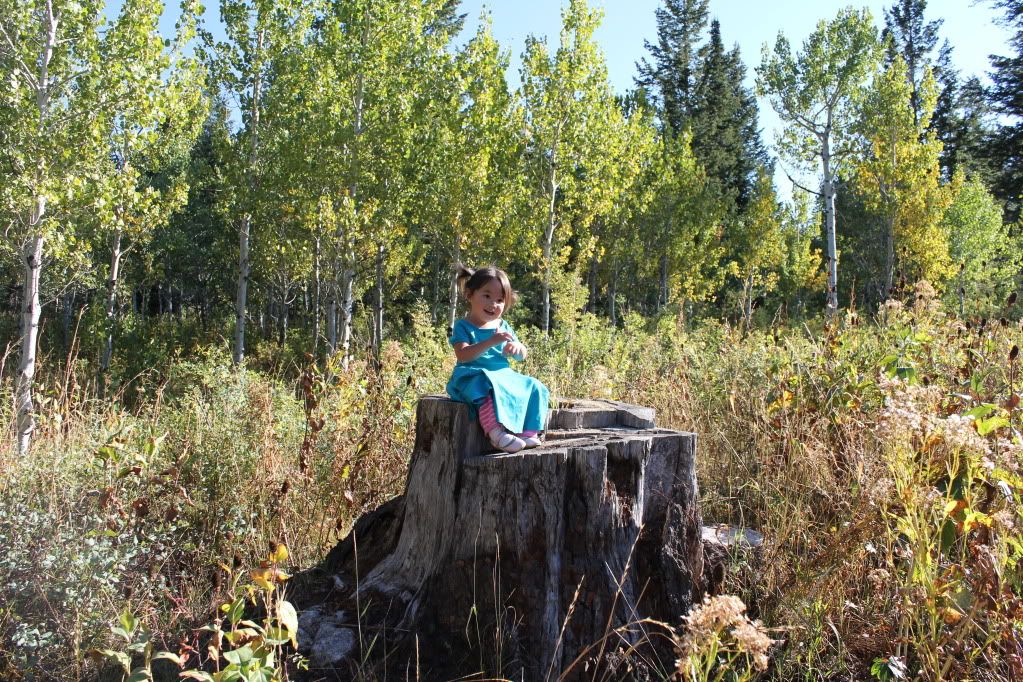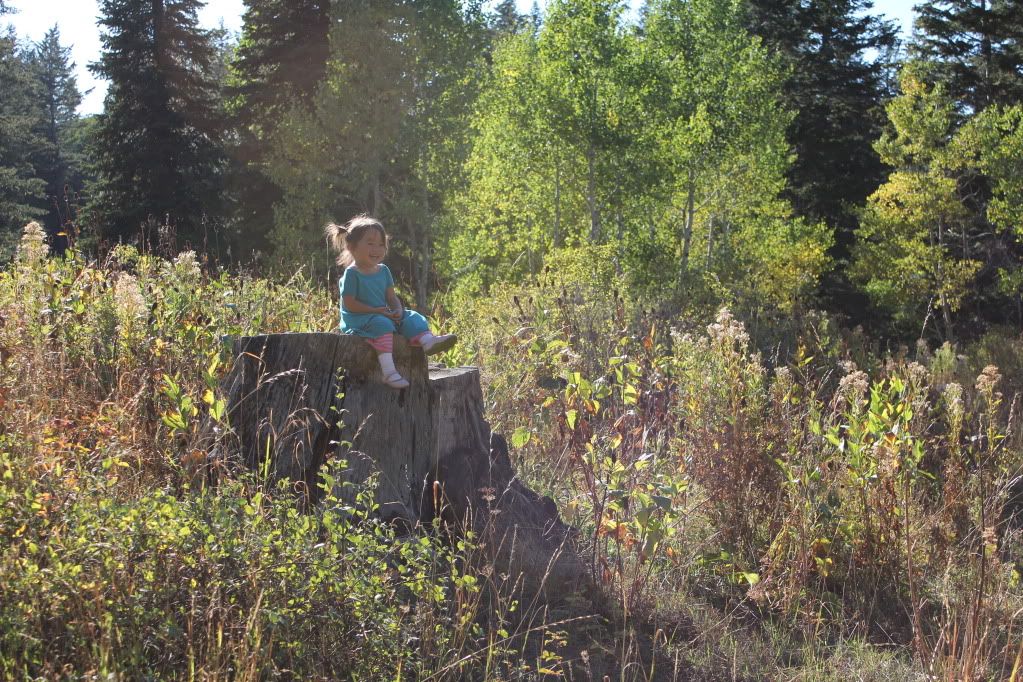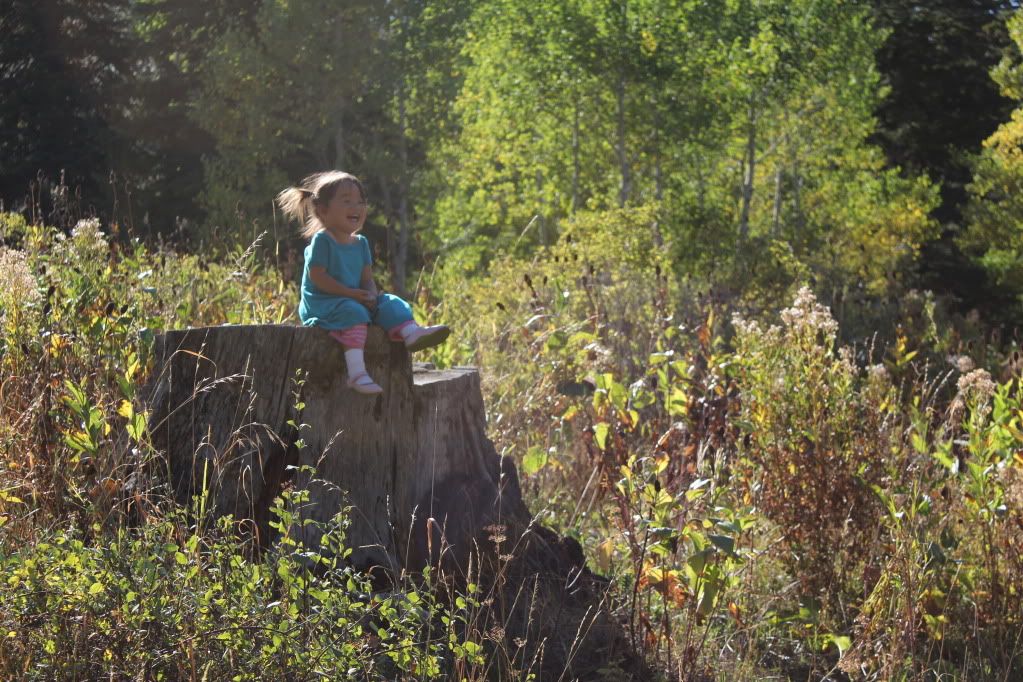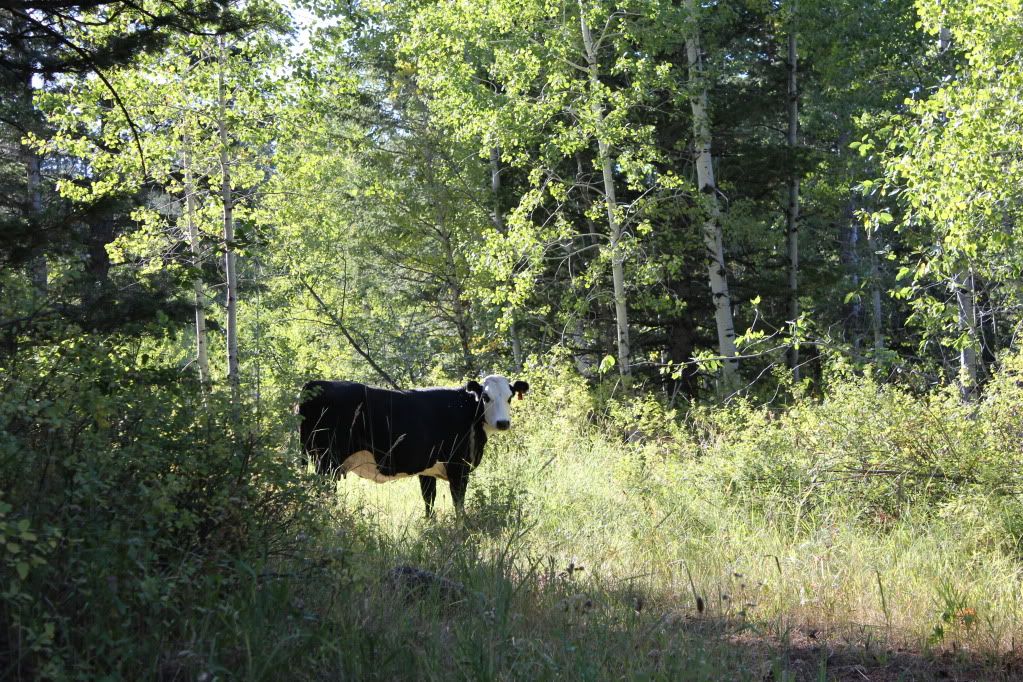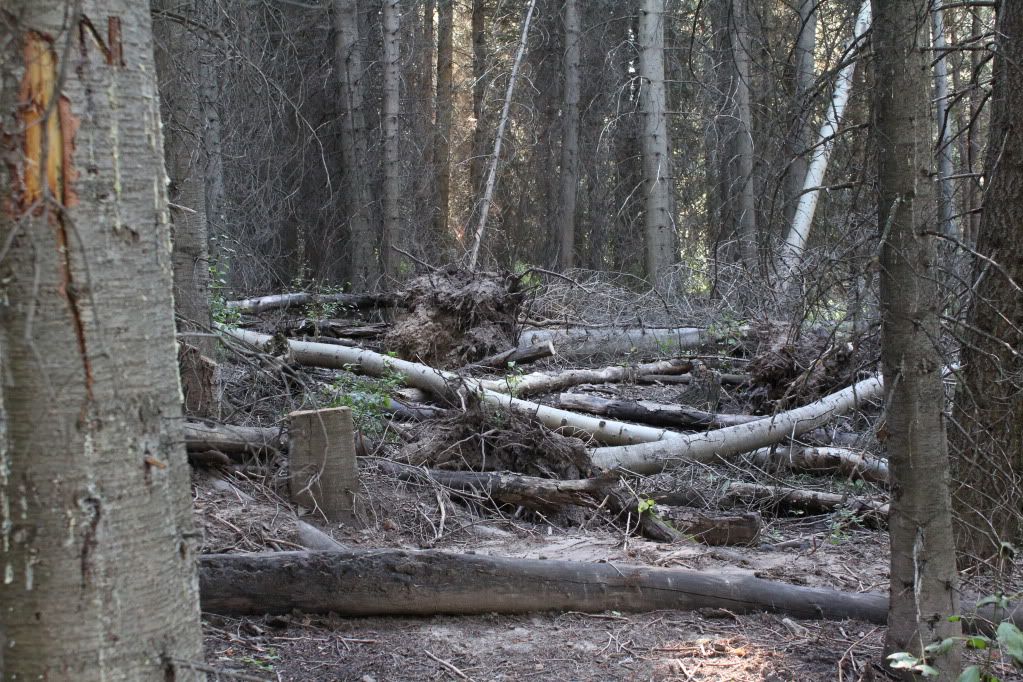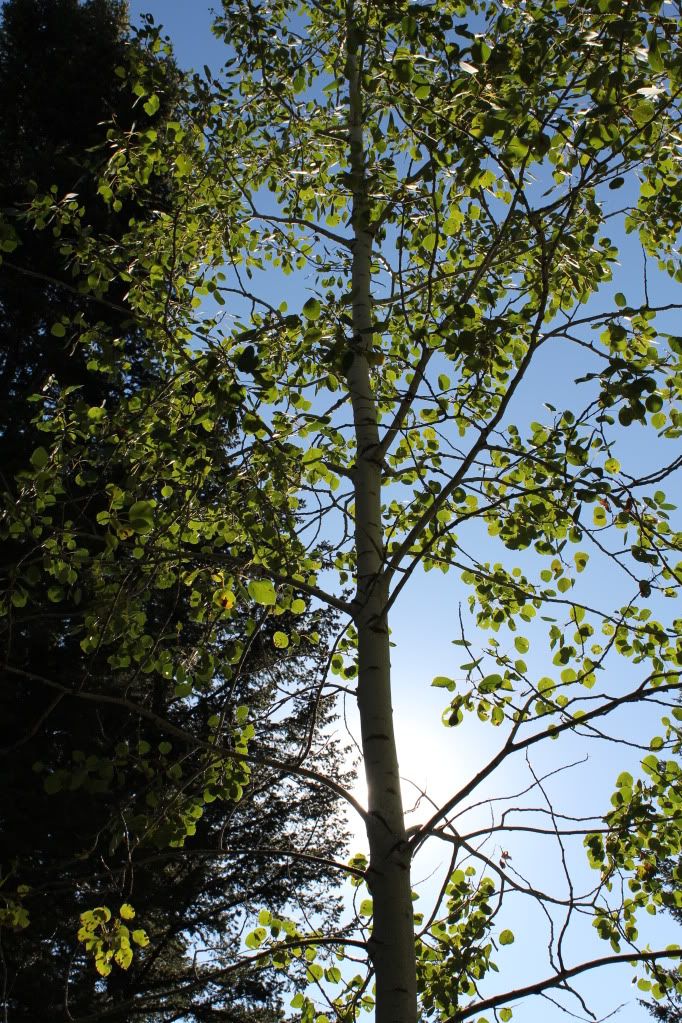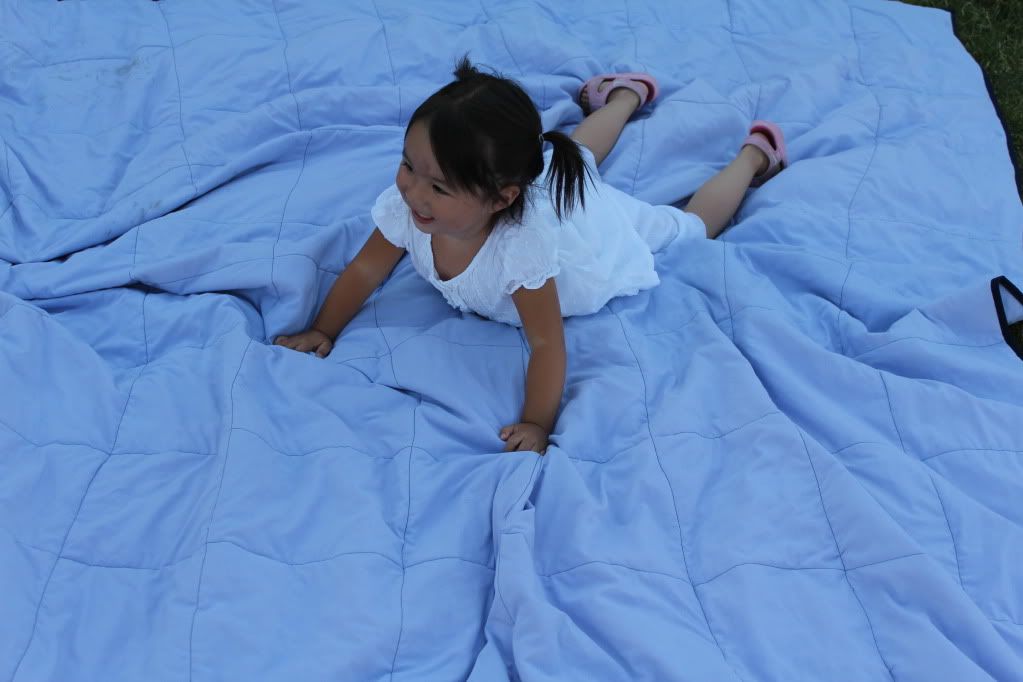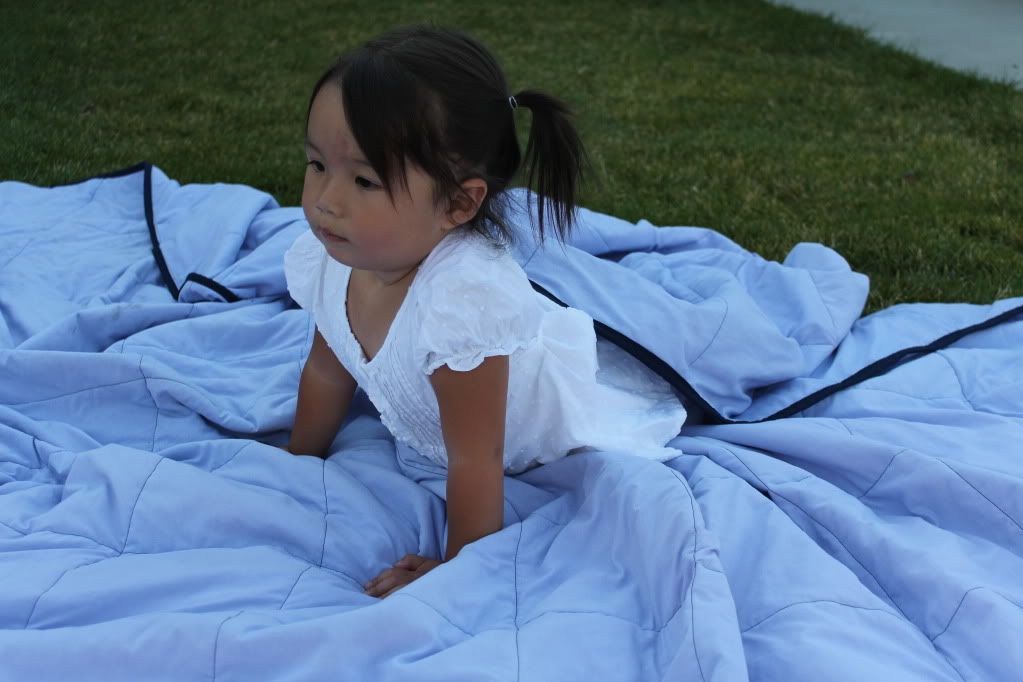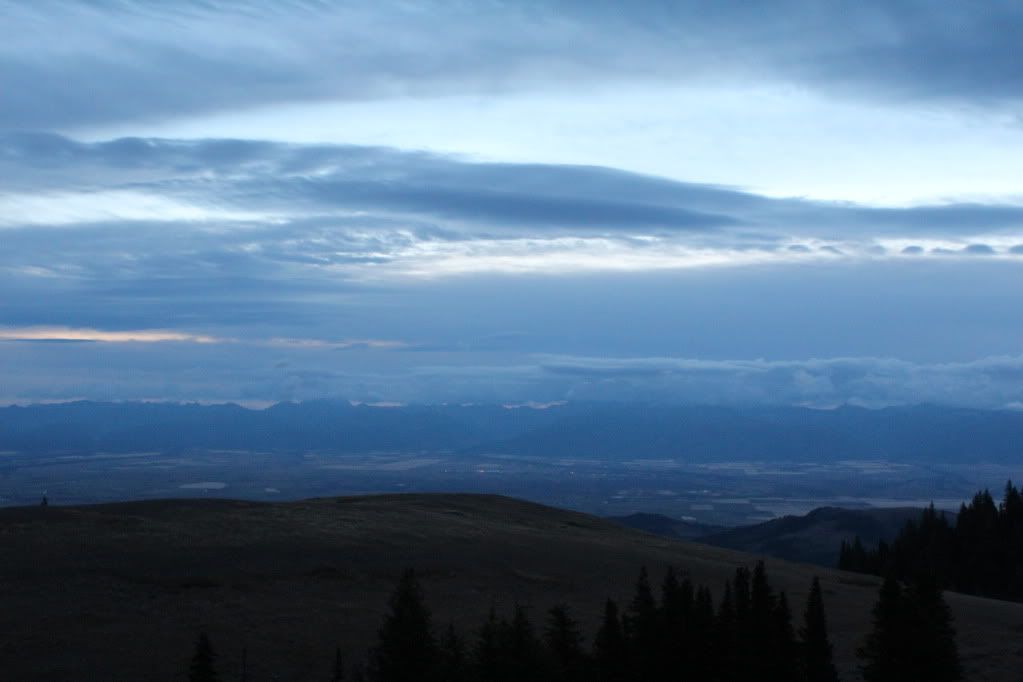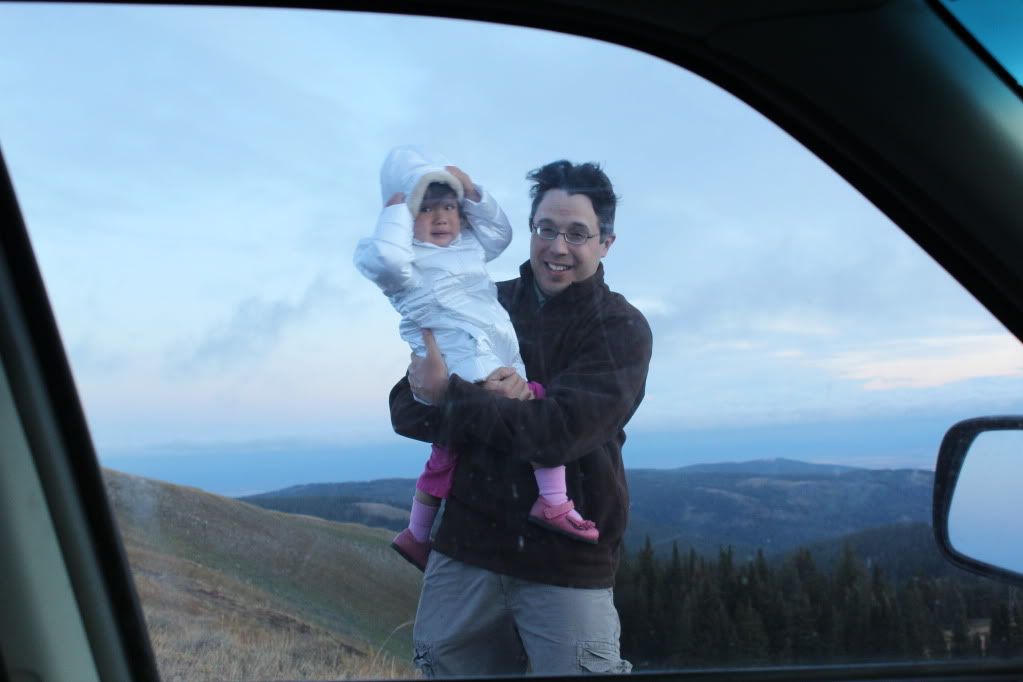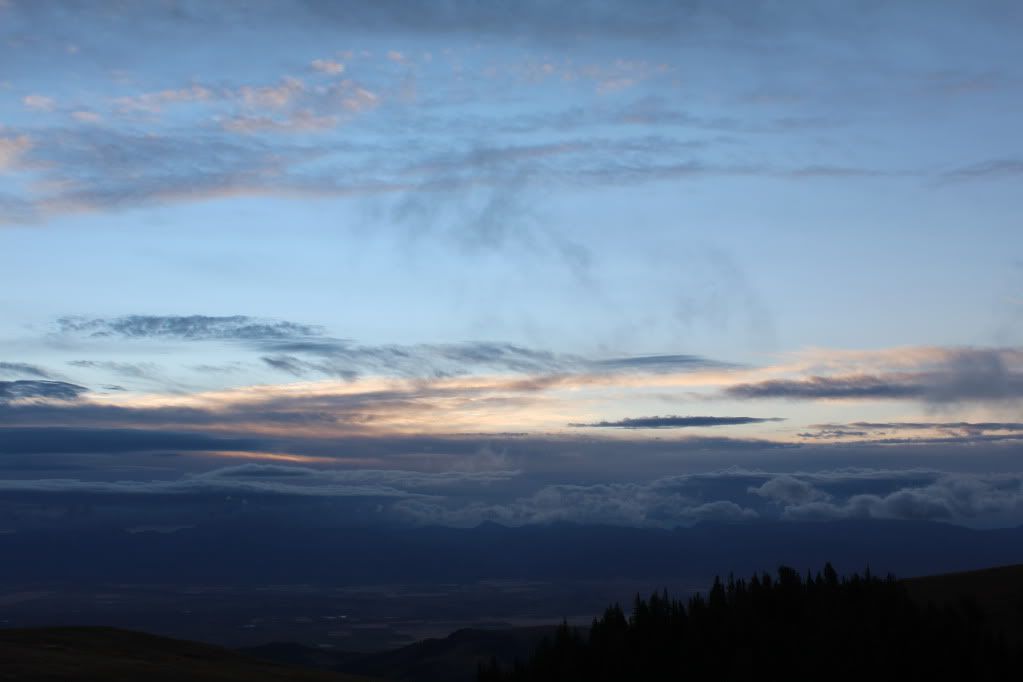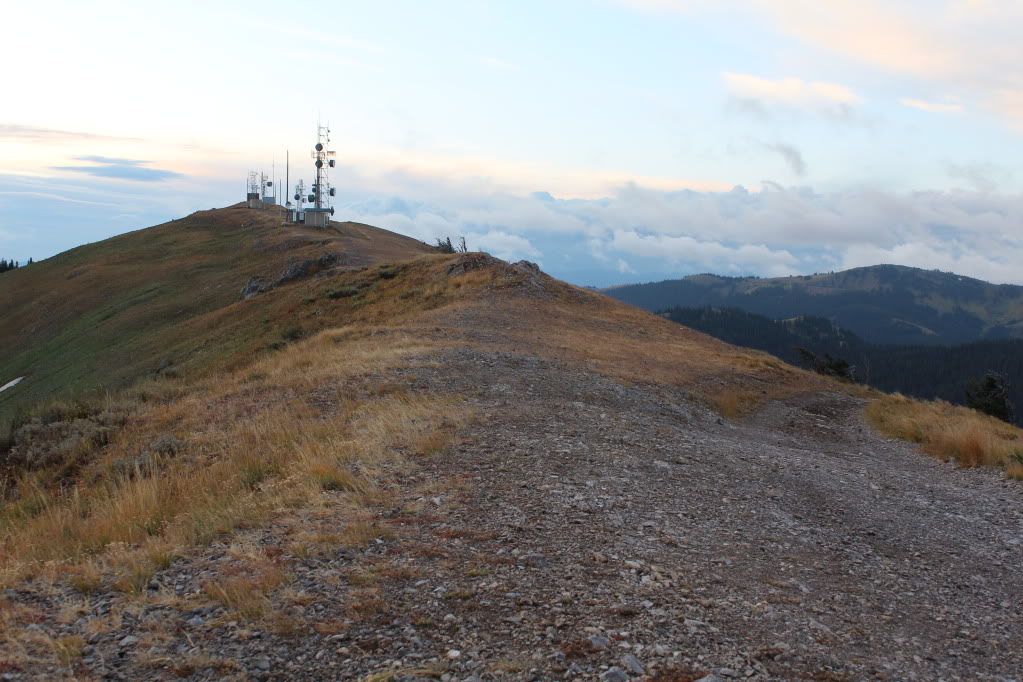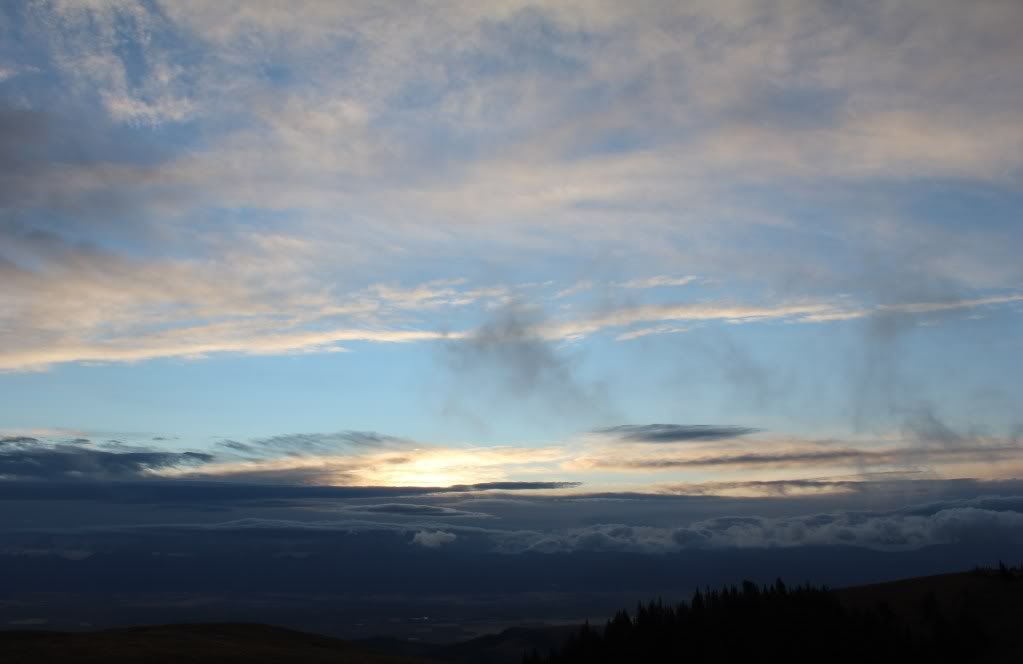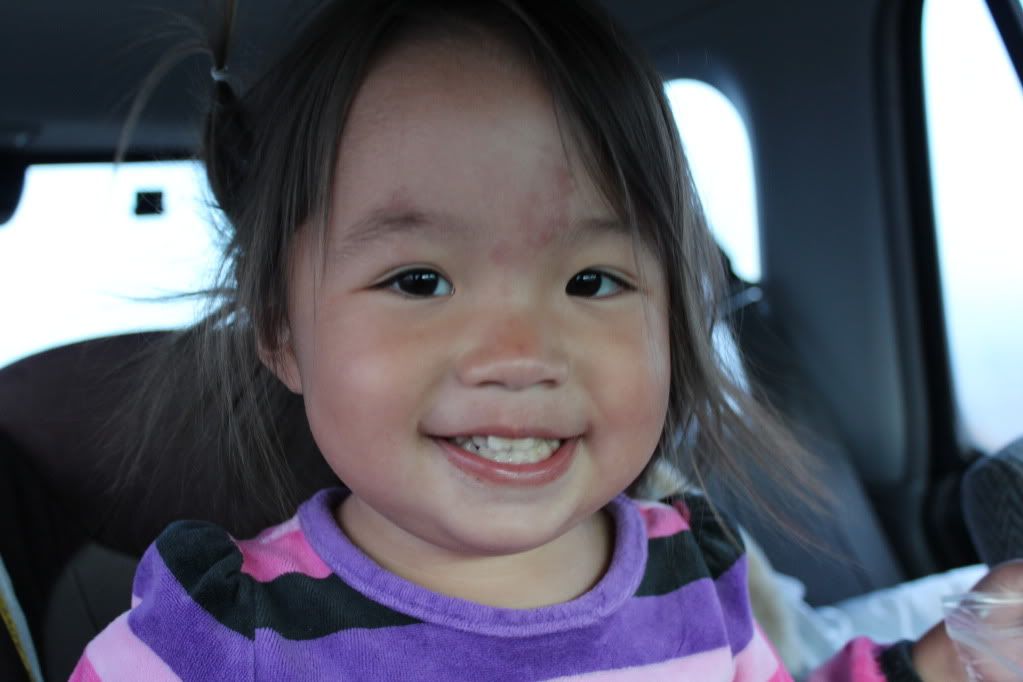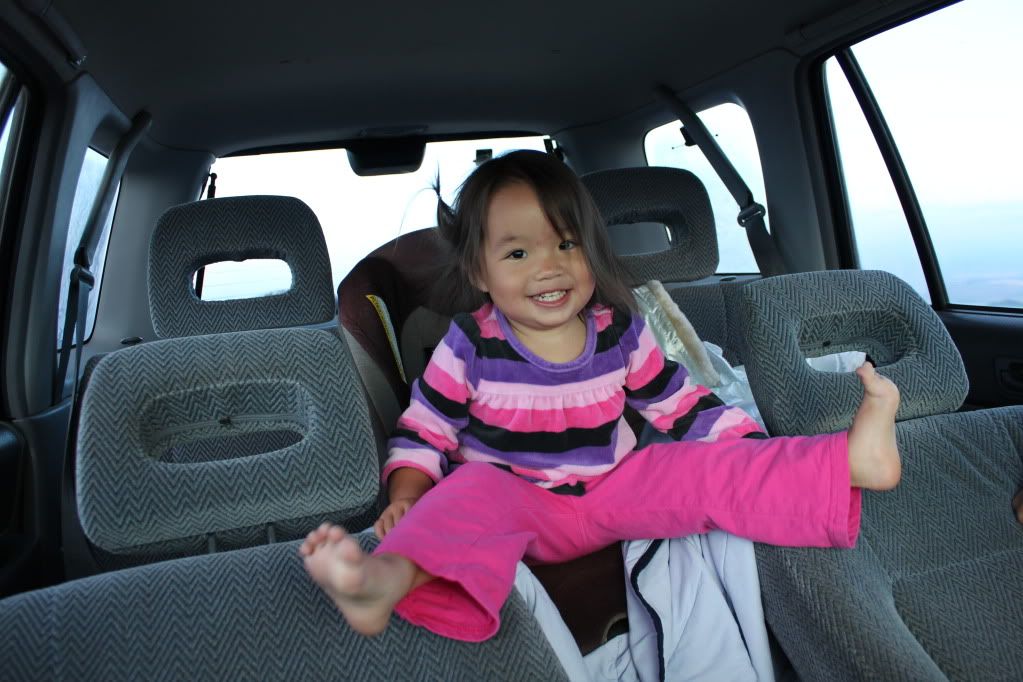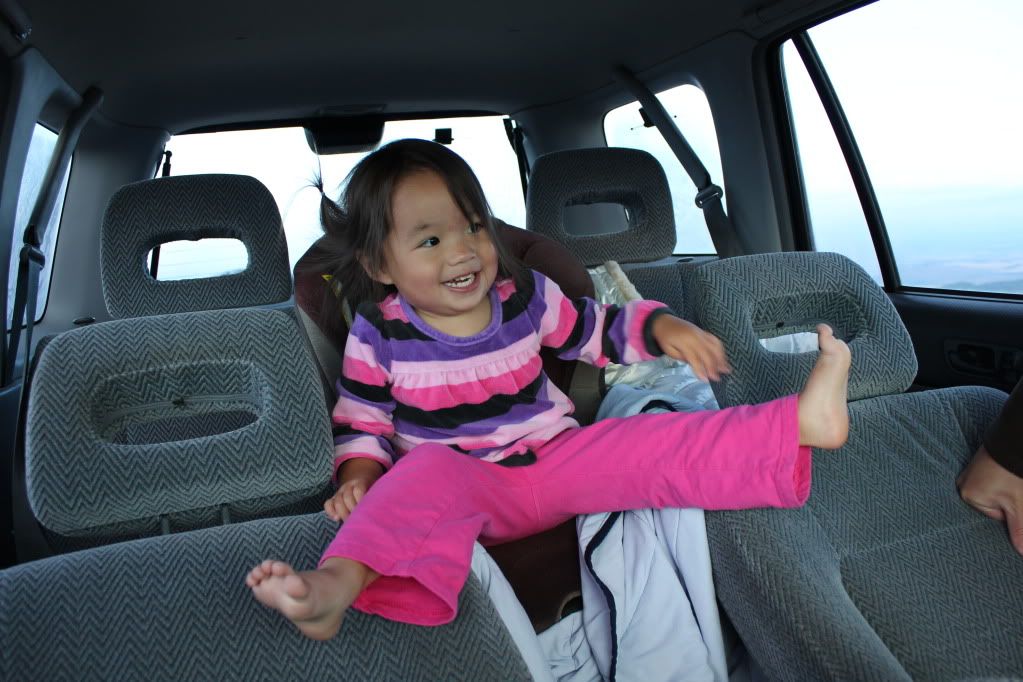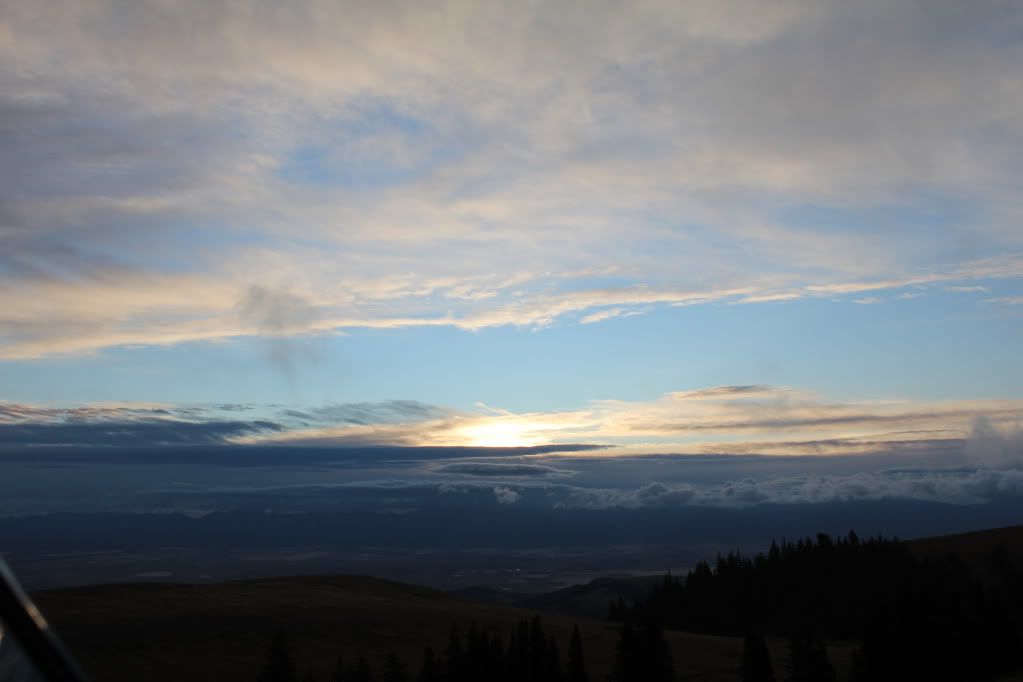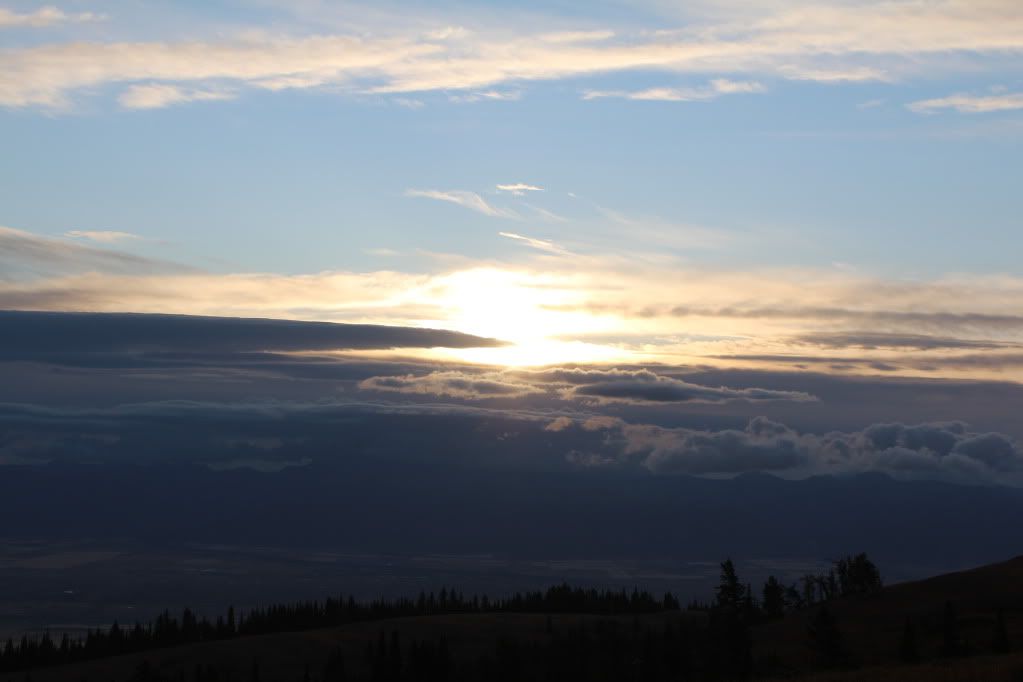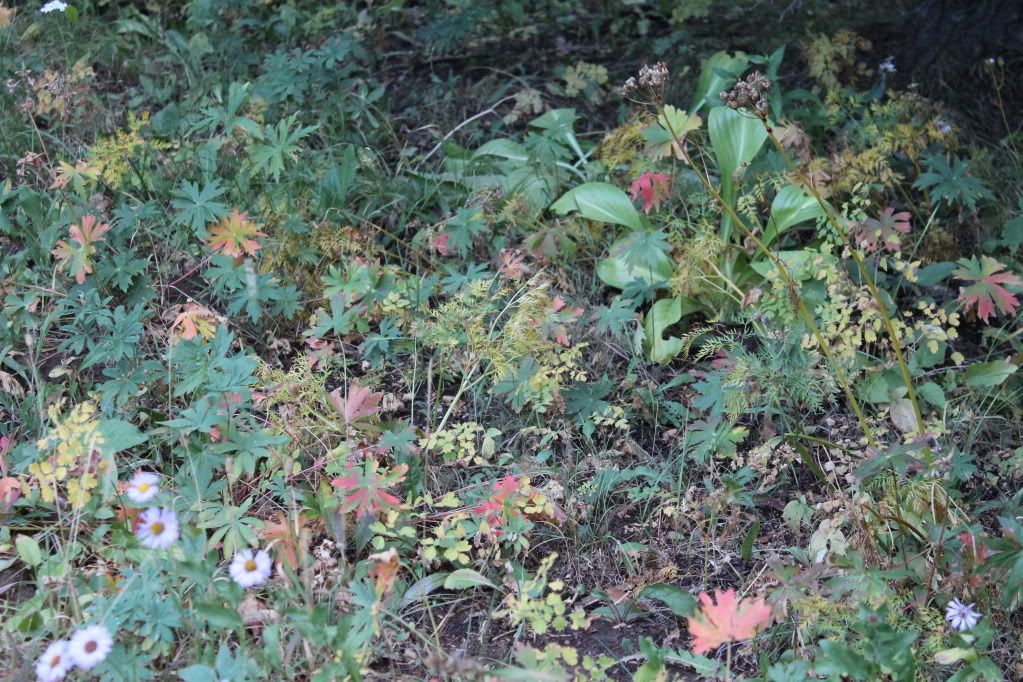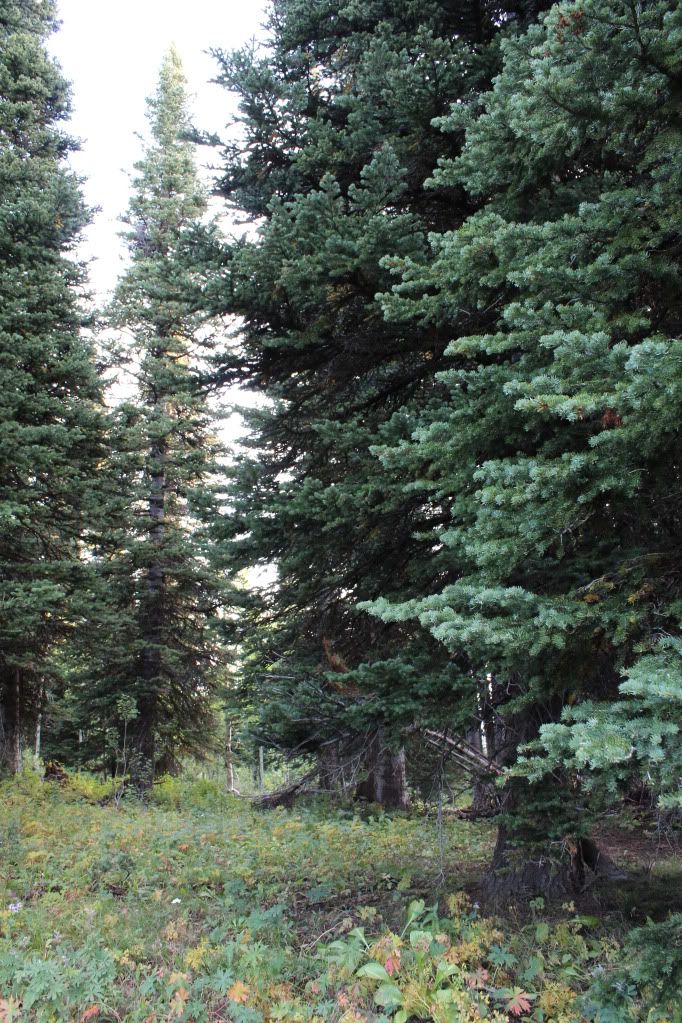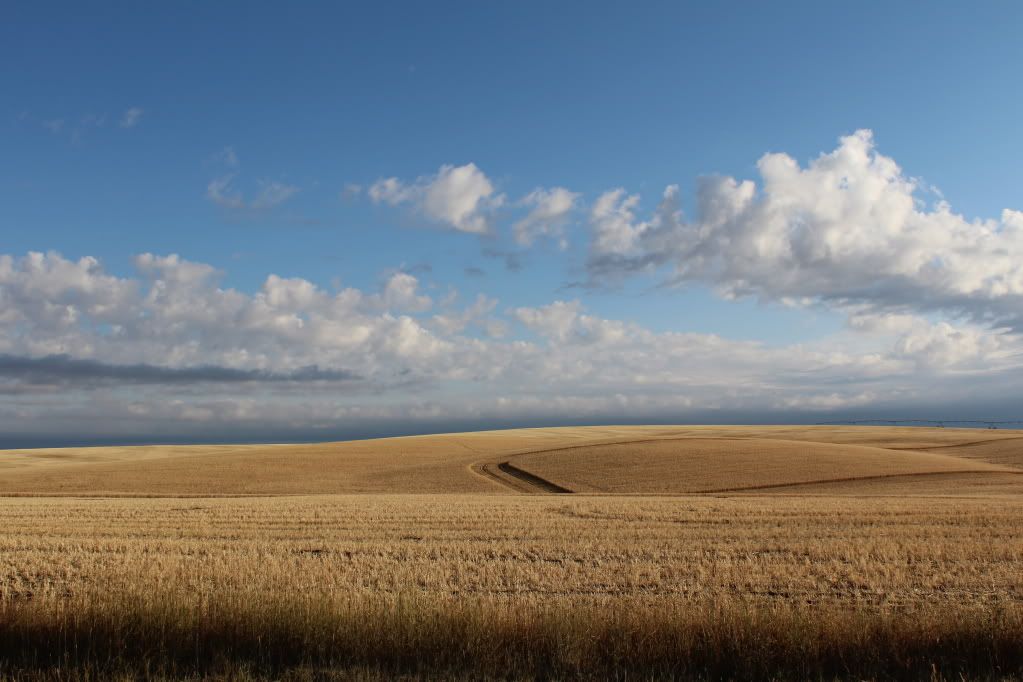(Yes, we took these pictures at the same time)
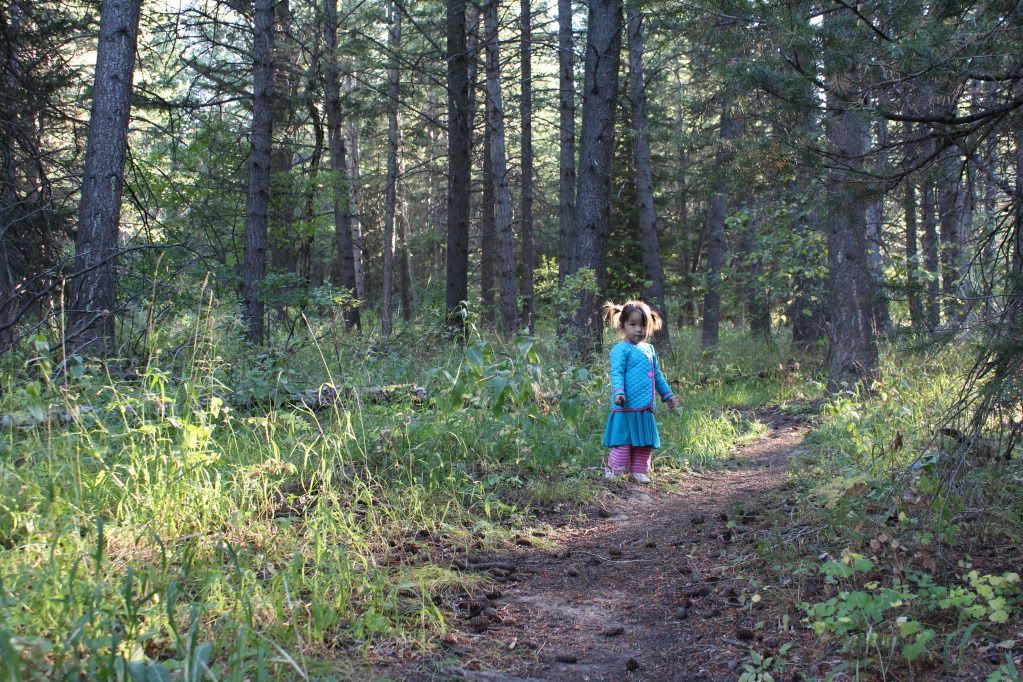

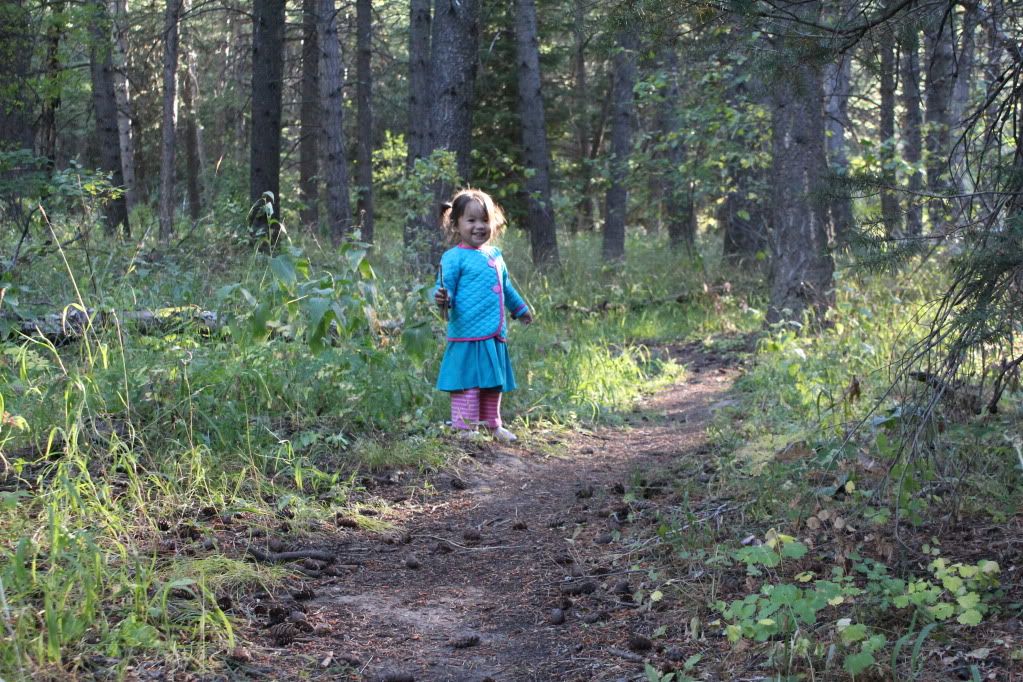


Here's how I made mine. (note the fabric was stiffer than I thought. I didn't prewash it b/c of the batting that was sticking out. Next time, I'll leave more of a seam allowance and just a little bit more wiggle room). (second note- this is how I made the body and sleeves of that sweet sweatshirt)
what you need:
prequilted fabric (or quilt your own)- I used about 2/3rds of a yard for my almost 2 1/2 year old.
double fold bias tape (buy it or make it yourself)- I needed more than 3 yards (one package- should've bought two)
sew on snaps
buttons
usual sewing stuff
Find a jacket or cardigan or long sleeved shirt to use as a pattern. This darling pink cardigan is knit and is a size too large for Ansley. (it also has a hood but I pretended that it didn't). I thought the knit didn't stretch at all when I tried the cardigan on Ansley but it must've/I should've made the pattern pieces a bit larger. And my sleeves are a little bit long and are folded over in the pictures. Live and learn.

I wanted to avoid any seams that I didn't have to sew (since I finished them all with bias tape) so I cut a rectangle a bit wider than twice the bottom of the cardigan. Ignore the slight a-line/flare of the cardigan when folding. I left about two inches of overlap in the middle, making sure the armpits lined up close to the edge of the fabric.
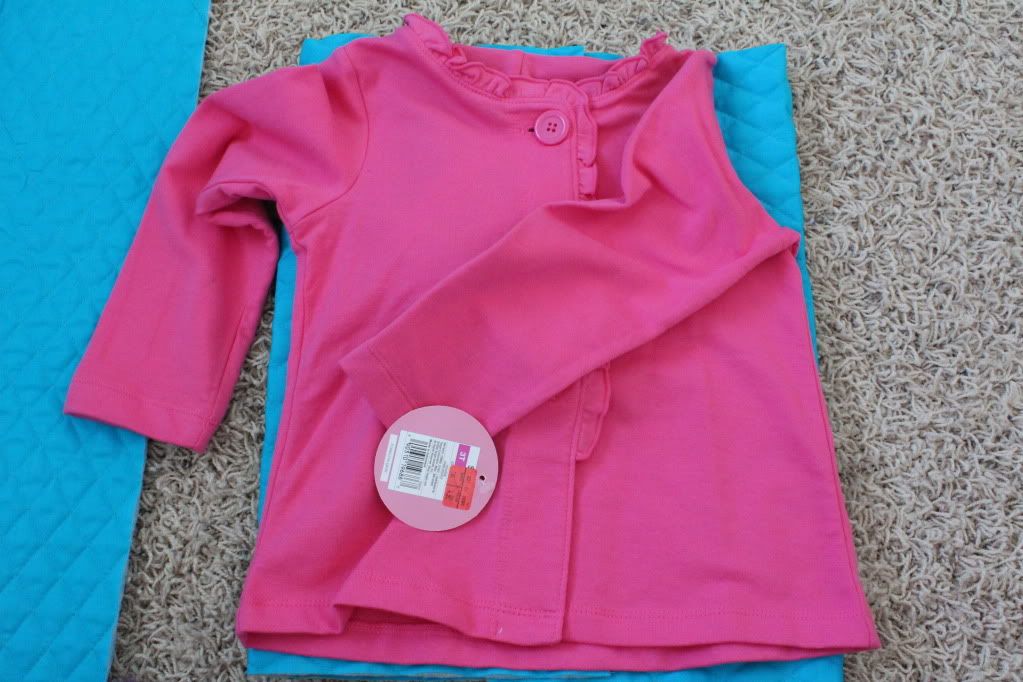
I folded the sleeves under and traced the arm curve, leaving a seam allowance. Cut out the arm holes.
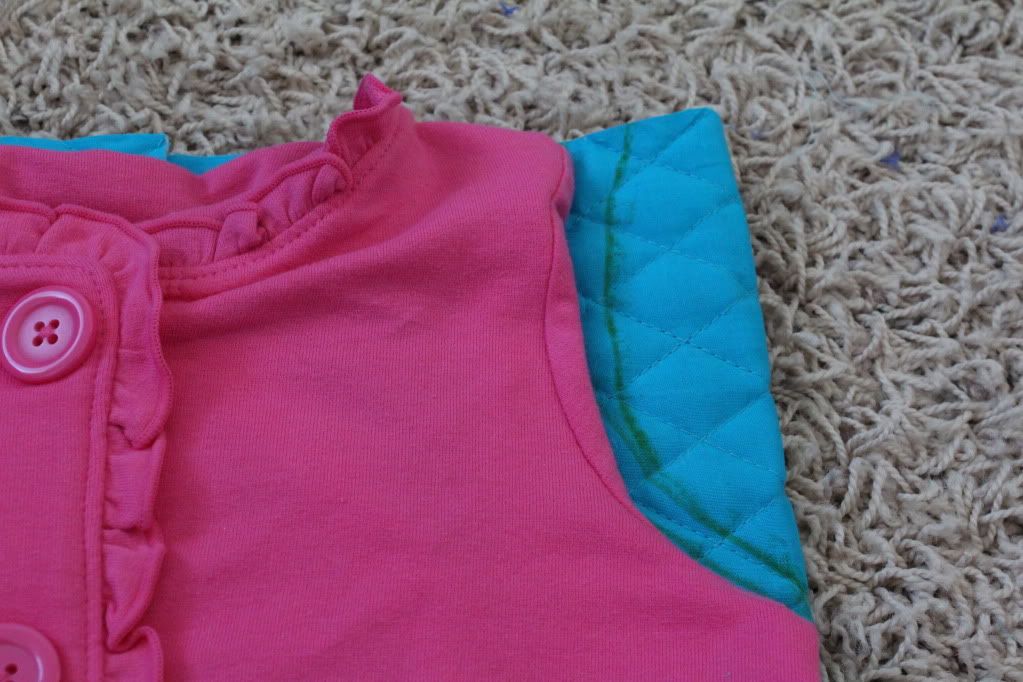
I traced the top neckline and cut it out (front layers only). In hindsight, I would've made this a little bit lower.
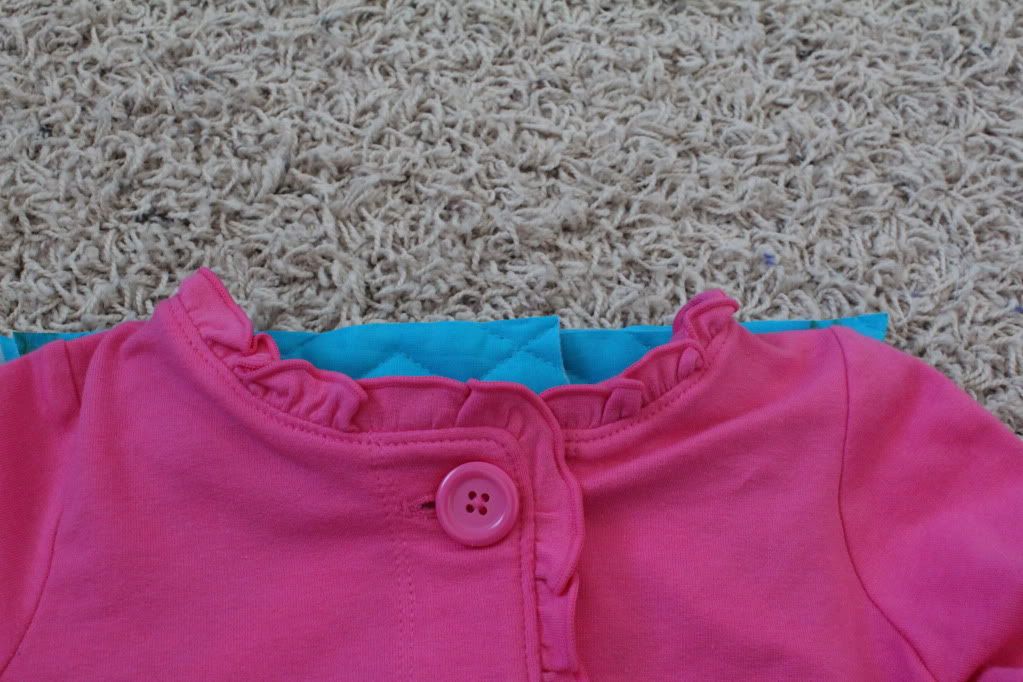
So this is what it looks like opened up and laying flat.
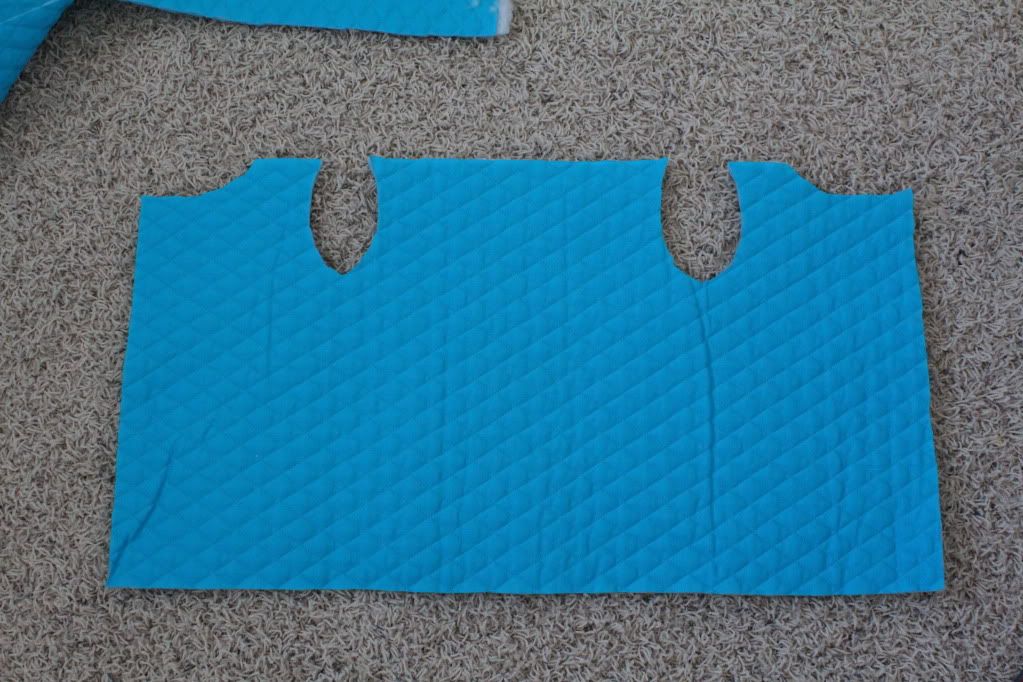
Trace your sleeves, making sure the fold of the fabric is lined up with the top of the sleeve. Leave yourself more room than I did.

Pin your bias tape around the neckline, opening of the jacket, bottom of the jacket, back up the opening of the jacket, and the neckline. This was my first time using premade biased tape and I did it wrong- the side that's a little bit smaller should end up on the top. You can sandwich yours on or you can open it up, align the raw edges, sew it on the wrong side of the fabric, then fold it over and sew it down. I highly recommend reading Dana's tutorial on how to sew on bias tape (and recommend rereading it to myself).
After pinning all the way around the jacket, I pinned the back neckline too. I'm not crazy about the way it turned out, but this was a great way to find out. I'm totally open to suggestions from you! Sew the bias tape on but leave the width of your shoulder seam on both sides. Or don't and unpick it like me.
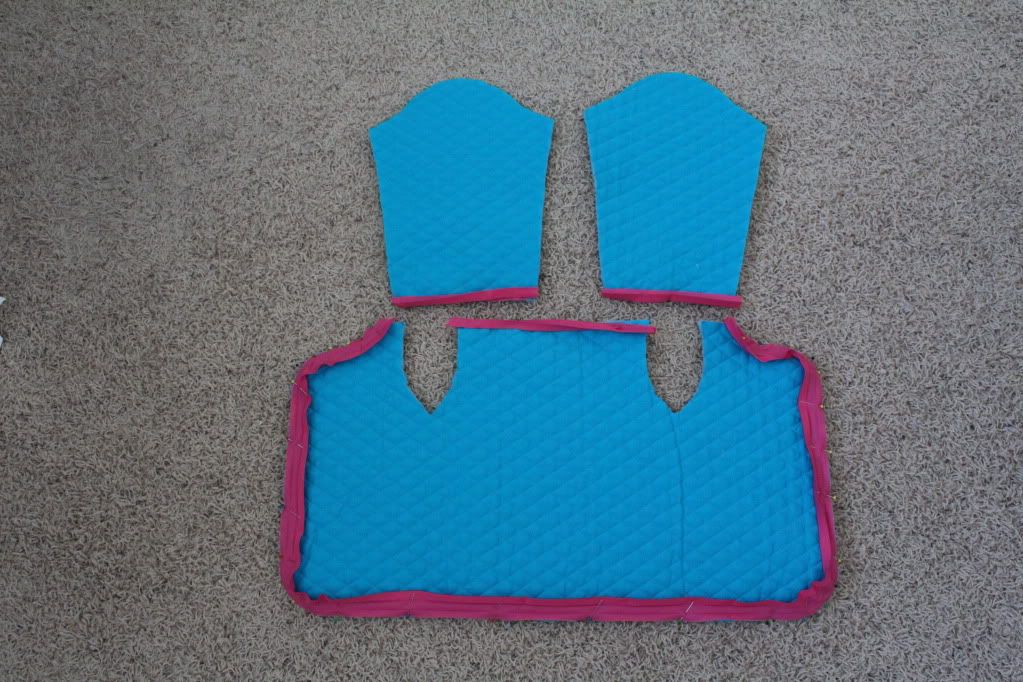
Pin bias tape to the end of the sleeves too. Sew it on. Sew the sleeves together, right sides together. Now we're left with the batting/raw edge. I covered mine with leftover quilt binding (ran out of bias tape).
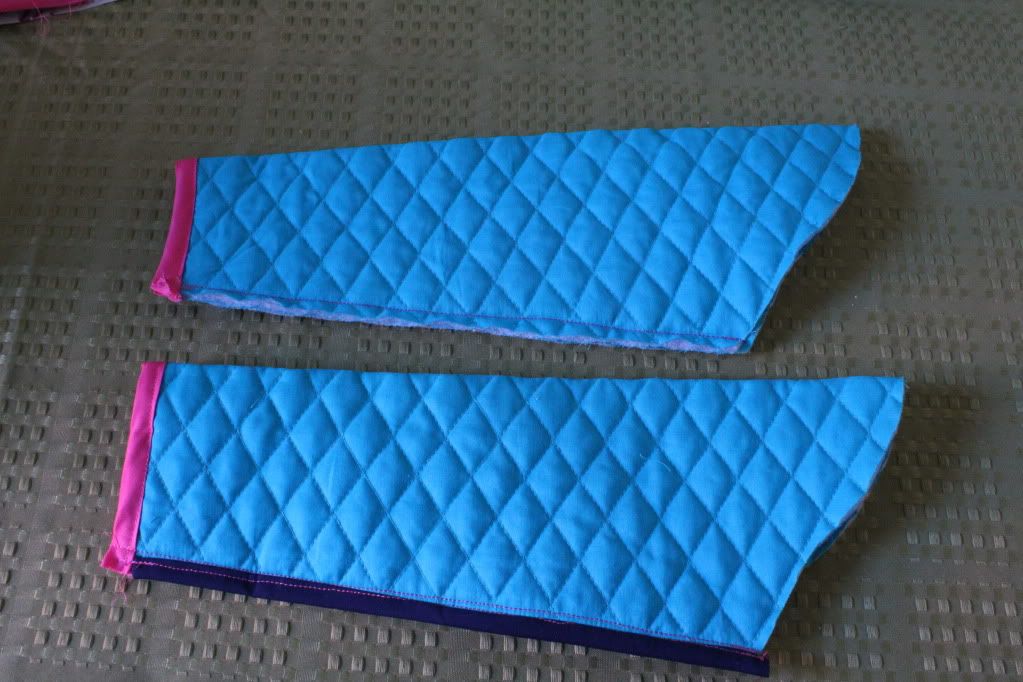
Now to sew the shoulder together (right sides together!). Unpick any of the bias tape that is in your way.

Fold the bias tape back over (here I just went with the sandwich method b/c it's such a short distance). I actually sewed through the bias tape and sewed the shoulder seam together at the same time, though you could sew the shoulder seam, then sew the bias tape back down.
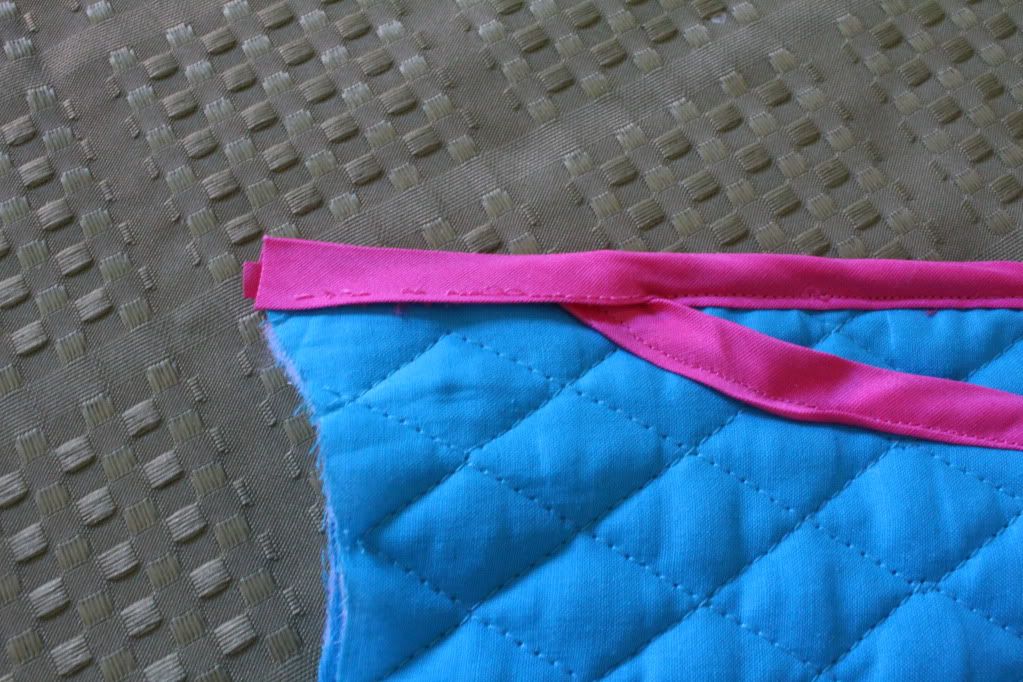
Once you have the jacket turned right side out, you can tack the binding/back collar together if you want so it doesn't try to turn in. I didn't b/c the neckline turned out smaller than I thought and didn't want Ansley to feel claustrophobic.
Now sew your sleeves in (you'll be sewing on the inside of the jacket (ie wrong side) and your sleeves will be right side out. Cover the edges with bias tape or quilt binding or something. I made a loop the size of the arm hole opening (the inside side, not the outside side like the picture and like the first sleeve that I did) from my extra quilt binding. Line up the raw edges and sew. Then fold the binding up and over the raw quilt batting/fabric and sew down again, completely encasing any raw edges.
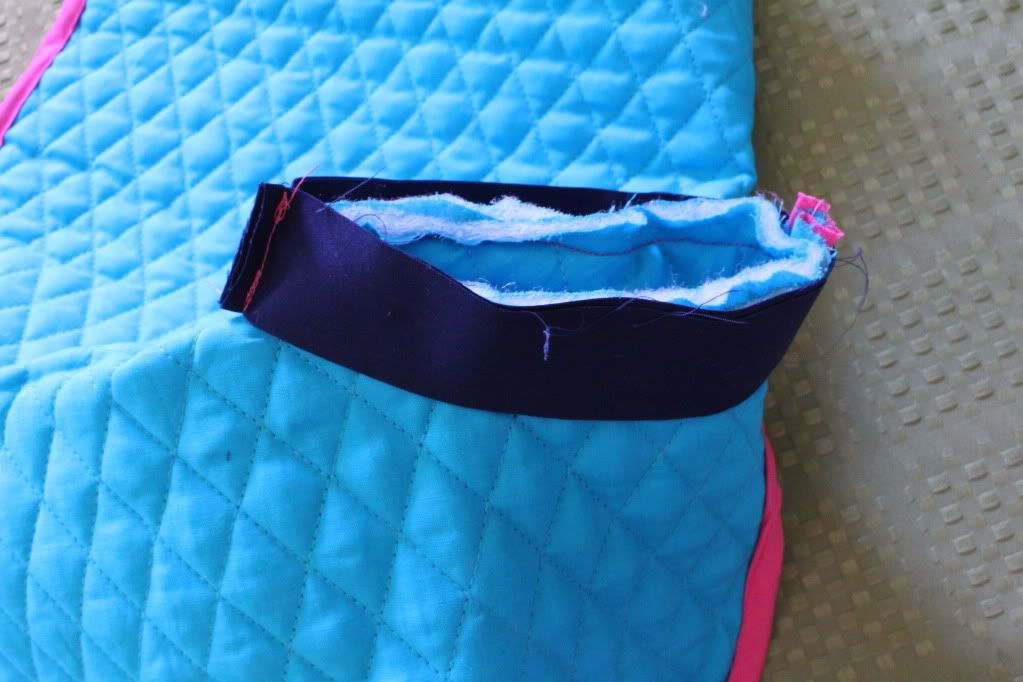
Sew the snaps on. I chose snaps b/c
a. I don't love making buttonholes on my machine
b. I didn't know what to do with the raw edges from a buttonhole (you could probably bind the button hole but I wasn't interested in that at the time)
c. they're easier for little fingers
d. I'd never used snaps before
I sewed the buttons on, covering the chicken scratchy snap stitches (I'm horrible at handstitching). I only used two b/c the package only had two that were the same size.
The whole jacket was a little stiff (straight jacket?) but softened up after I washed it. I think it might not be as bad if the jacket was larger? Would it be ridiculous if I made one for myself?
Luckily she loves it b/c it's like wearing a blanket. :) Let me know if you have any questions. I'd love to see yours if you make one!



Linked here:

